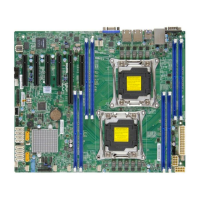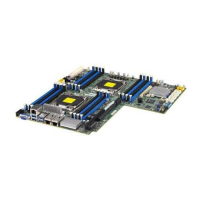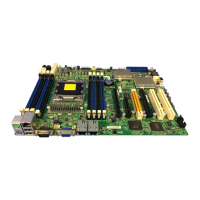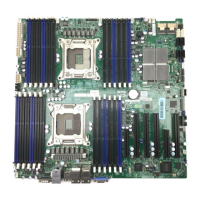3-5
Chapter 3: Troubleshooting
message and the info on how to update it on our web site. Also, check the
current BIOS revision and make sure it is newer than your BIOS before download-
ing. Select your motherboard model and download the BIOS file to your com-
puter. Unzip the BIOS update file and you will find the readme.txt (flash instruc-
tions), the sm2flash.com (BIOS flash utility), and the BIOS image (xxxxxx.rom)
files. Copy these files onto a bootable floppy and reboot your system. It is not
necessary to set BIOS boot block protection jumpers on the motherboard. At the
DOS prompt, enter the command "sm2flash." This will start the flash utility and
give you an opportunity to save your current BIOS image. Flash the boot block
and enter the name of the update BIOS image file. NOTE: It is important to save
your current BIOS and rename it "super.rom" in case you need to recover from
a failed BIOS update. Select flash boot block, then enter the update BIOS image.
Select "Y" to start the BIOS flash procedure and do not disturb your system until
the flash utility displays that the procedure is complete. After updating your
BIOS, please clear the CMOS then load Optimal Values in the BIOS.
Question: After flashing the BIOS my system does not have video.
How can I correct this?
Answer: If the system does not have video after flashing your new BIOS,
it indicates that the flashing procedure failed. To remedy this, first clear
CMOS per the instructions in this manual and retry the BIOS flashing proce-
dure. If you still do not have video, please use the following BIOS recovery
procedure. First, make sure the JPWAKE jumper is disabled (on P6SBM
only). Turn your system off and place the floppy disk with the saved BIOS
image file (see above FAQ) in drive A. Press and hold <CTRL> and <Home>
at the same time, then turn on the power with these keys pressed until your
floppy drive starts reading. Your screen will remain blank until the BIOS
program is done. If the system reboots correctly, then the recovery was
successful.
Question: I have memory problems. What is the correct memory
to use and which BIOS setting should I choose?
Answer: The correct memory to use on the SUPER P6DBS/P6DBE/P6DBU/
P6SBU/P6SBS/P6SBA is 168-pin DIMM 3.3v non-buffered SPD (Serial Present
Detection) SDRAM, SDRAM and EDO memory. SPD SDRAM is preferred but is
not necessary. IMPORTANT: Do not mix memory types; the results are
unpredictable. If your memory count is exactly half of the correct value, go
to the Chipset Setup in BIOS and set "SDRAM AUTOSIZING SUPPORT" to
Enabled
. Toggle between the available options until one setting correctly
displays the amount of memory installed.
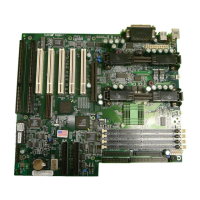
